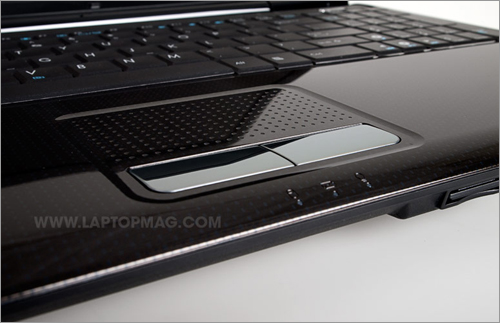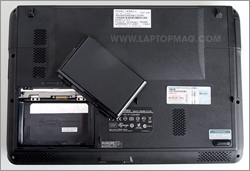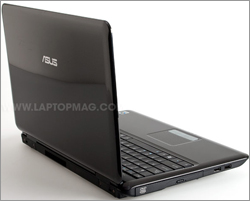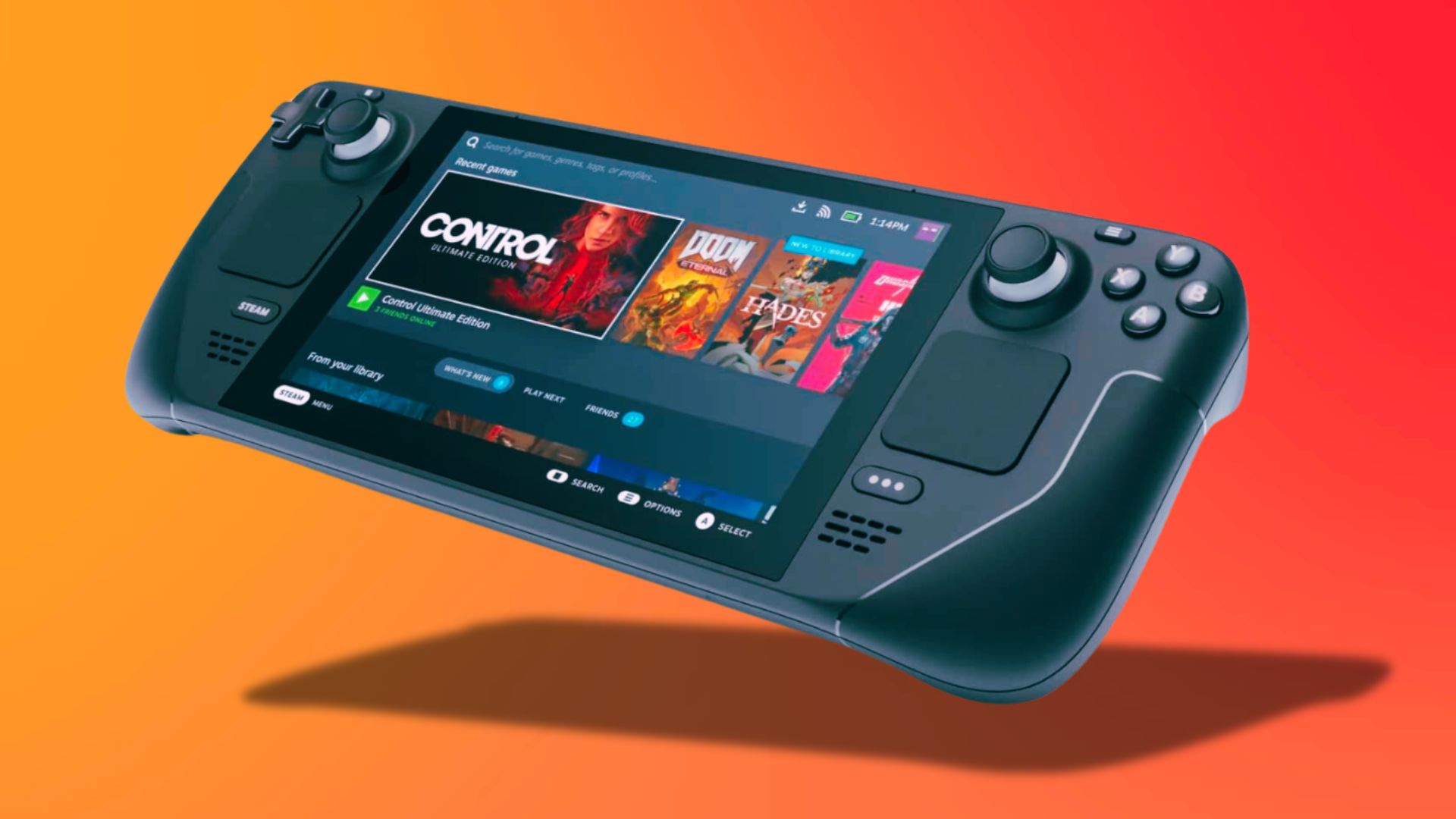Laptop Mag Verdict
This budget-friendly 15-inch notebook offers a slick design and good performance, but it's a little overpriced.
Pros
- +
Fast data transfer speeds
- +
Solid Wi-Fi performance
Cons
- -
No HDMI or eSATA ports
- -
Poor speaker quality
Why you can trust Laptop Mag
Unlike most laptops from ASUS, a company that's known more for flashy high-performance machines or diminutive netbooks, its K50 is a meat-and-potatoes system. This 15-inch mainstream notebook features decent performance, a solid keyboard, and a beautiful display, but lacks the bells and whistles found on higher-priced models, such as HDMI and eSATA ports, or even dedicated media controls. With an MSRP of $699, the K50 won't blow you away, but it stacks up well against similarly priced competitors, offering somewhat better endurance and a dash of style, too.
Design
The ASUS K50 has a simple but elegant design. Its glossy, dark brown lid is covered in small black dots that give it a textured look; this design is carried inside the lid around the touchpad and black plastic keyboard. Measuring 14.6 x 10.1 x 1.4 inches and weighing 5.7 pounds, the K50 is a bit large, but it accommodates a 15.6-inch display and full keyboard with a number pad. It doesn't, however, have any touch-activated media controls or shortcuts above the keyboard, which we would have appreciated.
Keyboard and Touchpad
The K50's keyboard feels solid, and barely had any flex. The keys, chamfered only on the left and bottom, offer a nice response. Touch typists will appreciate its spaciousness during long writing stints. As mentioned, there's a full number pad on the right, but ASUS didn't have to sacrifice the size of any keys to accommodate it.
The 3.0 x 1.4-inch touchpad has a dimpled surface that presented little friction during our tests. The silver mouse buttons are noisy enough to bother someone sitting nearby, but they offer good feedback.

Click to enlarge
Display and Sound
The K50 has a 15.6-inch, 1366 x 768-pixel (16:9) display. Its glossy surface makes it hard to view dark scenes in videos when you're in a room with bright overhead lighting, but its LED backlighting produces vibrant colors and sharp images. An episode of Heroes played from a DVD looked excellent; viewing angles were good (even from 90 degrees), which means two or more people can watch a movie comfortably.
Unless you have a dog's sense of hearing, you'll find that the audio levels of the K50 are dismal. And it's no surprise, considering that the system only packs a single speaker that's blocked by the display hinge. It was tough to hear two people talking during Heroes--even when sitting right in front of the computer--so you'll want to make sure you have a set of external computer speakers laying around. When we played "In This City" by Iglu & Hartly, we thought music sounded a bit better, but it was still too hollow and quiet.
Ports and Webcam
If you're looking for anything but the basics when it comes to connectivity, look elsewhere. The K50 offers four USB 2.0 ports (two on either side), an Ethernet jack, a VGA port (for outputting to a monitor), and headphone/microphone jacks. Up front there's a 3-in-1 memory card reader, but that's it: there's no HDMI, so you won't be outputting any media to an HDTV. However, it's less egregious an omission than on the K40, which has discrete graphics. On the left side of the unit is an optical drive for playing and burning DVDs.

Click to enlarge

Click to enlarge
The K50 has a 1.3-megapixel webcam for video chatting with applications like Skype. We called a friend using Google Chat with video; he said that we looked good, colors were represented accurately, and our voice was in sync with the video.
Performance
Powered by a 2.1-GHz Intel Core 2 Duo T6500 running Windows Vista Home Premium, the K50 fared well compared to other sub-$700 systems such as the Dell Inspiron 15, Toshiba Satellite L505, and Gateway NV Series. It notched 3,100 points in the PCMark Vantage benchmark, which falls just below the mainstream category average (3,225), and behind Gateway NV Series, which scored 3,262 points.
The system booted in 63 seconds, which is about average for mainstream systems. We did not notice any lag during multitasking while playing a DVD with multiple tabs open in Internet Explorer, likely due to the 4GB of RAM. The K50's roomy 5,400-rpm, 250GB hard drive also had excellent file transfer performance, racking up an average of 25.2 MBps during our LAPTOP Transfer Test. That's far better than the category average of 19.2 MBps.
The K50 doesn't come with discrete graphics; instead, it has an integrated Intel GMA X4500M GPU. You won't be able to play many games on the system (we experienced an unplayable 4 frames per second in Far Cry 2 on autodetect mode at a resolution of 1024 x 768), but you'll have enough steam for basic video processing tasks. It scored 859 points in 3DMark06, which was better than the Dell Inspiron 15 (767) and Toshiba Satellite L505 (715), but behind the Gateway NV Series (942). Despite the relatively low graphics rendering performance, the system was able to handle applications like Google Earth just fine. We breezed around the world, left it spinning like a globe, and were easily able to zoom in and around the United States without an issue.
The K50 also handled video transcoding fairly well. Using HandBrake, we transcoded a 5:05 MPEG-4 clip into AVI format, and it took 7 minutes and 18 seconds to complete the task. That's on a par with the Toshiba Satellite L505 (7:56) and the Gateway NV Series (7:20), but slightly behind the category average of 7:14.
Battery and Wi-Fi

Click to enlarge
The K50 has a six-cell battery, which ran for 3 hours and 50 minutes on the LAPTOP Battery Test (continuous surfing over Wi-Fi) before kicking the bucket; that bests the category average by 13 minutes, and is half an hour better than the Gateway NV Series.
The 802.11/b/g/n Wi-Fi radio averaged 26.3 Mbps at a distance of 15 feet from our router, and dropped to 16.4 Mbps at 50 feet. The category average at 15 feet is just 19.5 Mbps, and the K50 bested the throughputs of the Dell Inspiron 15 (19.0 Mbps), Toshiba Satellite L505 (18.7 Mbps), and Gateway NV Series (21.0 Mbps). However, at 50 feet, its scores weren't as impressive. It held close to the category average of 16.1 Mbps, but all of the other aforementioned systems outperformed it by a range of 1.3 Mbps to 3.6 Mbps.
Greenness
The ASUS K50 isn't yet rated by EPEAT, but it was fairly efficient while charging. It took 1 hour and 20 minutes to charge the battery to 80 percent, and 2 hours and 16 minutes to fully charge. The system consumed an average of 44.8 watts while charging, for a total of 6092.8 watts during the full charge cycle. Using our LAPTOP Battery Efficiency Rating, in which we divide the total watts used by the battery life, we received a score of 26.5, which is better than the mainstream category average of 34.5, not to mention the thin-and-light average of 28.7 (lower is better).
Software
The K50 comes relatively free of bloatware; when we powered the system on, we found that CyberLink DVD Suite was installed, as well as a gamut of ASUS' own utility applications, which can be used for backing up your system, running system recovery, and more. It also comes preinstalled with a 60-day trial of Microsoft Office, a 30-day trial of Norton Internet Security, and Adobe Reader 9.
Configurations
Our system (K50IJ-C1) came configured with a 2.1-GHz Intel Core 2 Duo T6500 CPU, 4GB of RAM, integrated Intel GMA X4500M graphics, and a 5,400-rpm, 250GB hard drive. For the same price, the K50IJ-D1 comes with a slightly faster 2.2-GHz Intel Core 2 Duo T6600 CPU.
Warranty and Support

Click to enlargeASUS offers two years of limited hardware coverage, a one-year battery pack warranty, one year of accidental damage protection, and 30 days of Zero Bright Dot protection, should you experience dead pixels on your LCD. The company offers 24/7 tech support; if you're curious about how the company stacked up against other manufacturers, check out our annual Tech Support Showdown.
Verdict
The ASUS K50 was a pleasure to use. It offered zippy performance speeds in comparison to similarly priced notebooks, a comfortable keyboard, and lengthy battery life. At $699, though, the K50 is currently $100 more expensive than comparable systems such as the Gateway NV5807u. While the latter system may have shorter battery life, this factor hardly outweighs the price differential. Still, for someone who needs a notebook for writing papers, surfing the Web, and watching movies, the K50 is a solid choice.
ASUS K50 Specs
| Brand | ASUS |
| CPU | 2.1-GHz Intel Core 2 Duo T6500 |
| Card Slots | 3-1 card reader |
| Company Website | http://usa.asus.com |
| Display Size | 15.6 |
| Graphics Card | Intel GMA X4500M |
| Hard Drive Size | 250GB |
| Hard Drive Speed | 5,400rpm |
| Native Resolution | 1366x768 |
| Operating System | MS Windows Vista Home Premium (32-bit) |
| Optical Drive | DVD /-RW |
| Optical Drive Speed | 8X |
| Ports (excluding USB) | VGA, Microphone, Headphone, Ethernet |
| RAM | 4GB |
| RAM Upgradable to | 4GB |
| Size | 14.6 x 10.1 x 1.4 inches |
| USB Ports | 4 |
| Video Memory | 256MB |
| Warranty/Support | Two-year limited/24/7 toll-free phone |
| Weight | 5.7 pounds |
| Wi-Fi | 802.11b/g/n |
